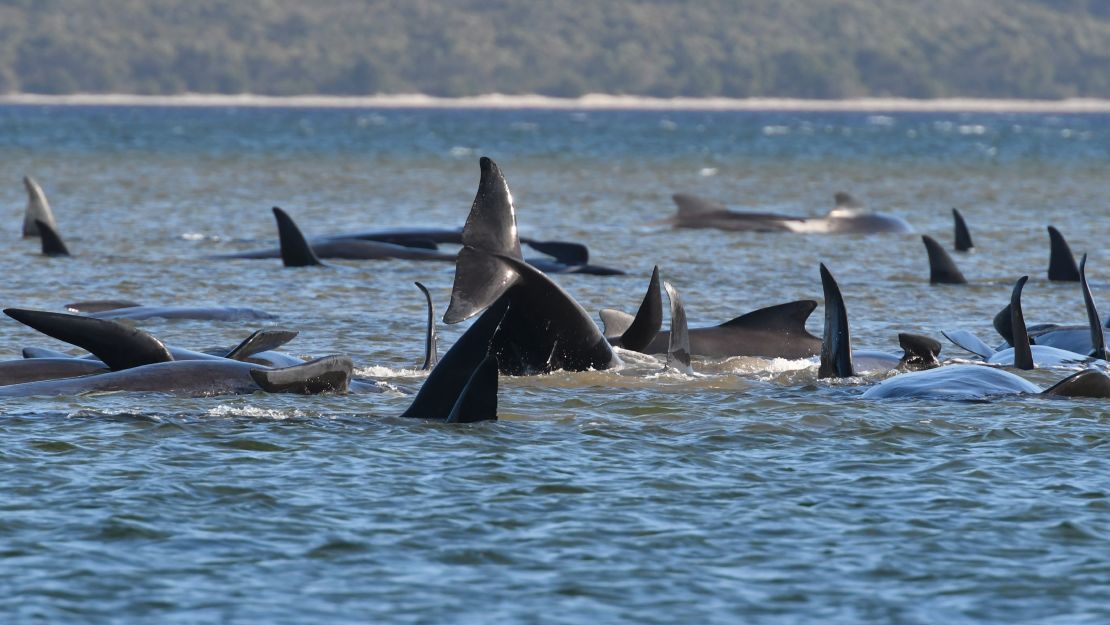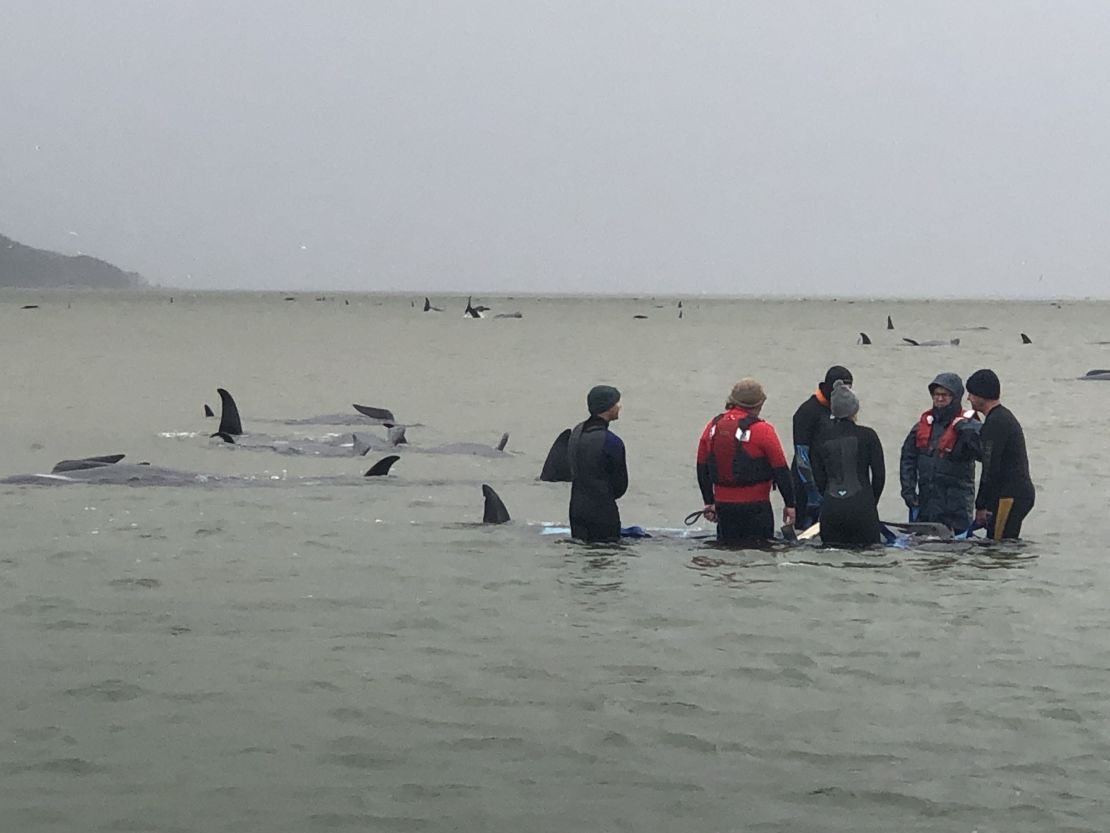Rescue teams in Tasmania were already frantically working this week to save about 270 pilot whales stranded in a harbor. Up to a third of the animals were believed to be already dead, with the clock ticking to save those still alive.
Then, on Wednesday, they found another 200 stranded whales, which they fear may also be dead – making this the largest mass whale stranding in the Australian island state’s history.
Tasmanian authorities spotted the first batch on Monday: the estimated 270 whales were stranded in the small town of Strahan, scattered along two sandbars and the strip of beach. After determining that about a third had died, officials, volunteers and marine experts launched a concerted rescue mission on Tuesday.
Wednesday brought new horrors, after aerial surveying detected a second group of 200 whales further south in Macquarie Harbour, believed to be part of the same mass stranding event at Strahan.
“From the air most of the additional whales detected appear to be dead, but a boat has headed over there this morning to do an assessment from the water,” said Nic Deka, regional manager of Tasmania’s wildlife service, in a press release.

This brings the total number of whales for the mass stranding to more than 450, according to the Department of Primary Industries, Parks, Water and Environment.
The additional whales were found in a part of the harbor where the water is a dark tannin color – so they may have been stranded, washed back into the water, then back into the bay, making them more difficult to detect, Deka said.
Wildlife biologist Kris Carlyon, one of the experts leading the rescue mission, said this stranding event is the biggest ever recorded in Tasmania. “There is little we can do to prevent this occurring in the future,” he added.
Tasmania’s previous largest stranding was in 1935, when 294 long-finned pilot whales were stranded in the northwest town of Stanley, according to the wildlife department.
But there’s little time to mourn; rescuers still have to save the living whales that remain. There are so many of them, spread across such a large area, that Carlyon said on Tuesday they have to triage by focusing first on the whales with the best chances of success.
“This is such a complex event that any whale we save we are considering a real win,” he said. “We are focusing on having as many survivors as we can.”
There is a bit of good news; 25 of the Strahan whales were rescued by the end of Tuesday, with the use of a boat and sling, and released back out to the sea, authorities said.

And rescue teams are optimistic that they can save more. “I think we have a really good chance of getting more off the sandbar and out through the gates,” Carlyon said on Wednesday. “We are still very hopeful.”
The rescue mission is expected to take several more days. On Wednesday, rescue teams will also be doing a more extensive search and conducting an infrared survey to assess the surviving whales’ condition.
It’s not entirely clear what caused the whales to wash up on shore; Carlyon said whales might have been drawn in after feeding close to the coast; or, a few whales may have wandered too close in “simple misadventure,” and the rest of the pod followed.
“In the back of our minds is always, ‘What happened? What happened here?’ Typically, we don’t get any answers,” he said on Wednesday.

